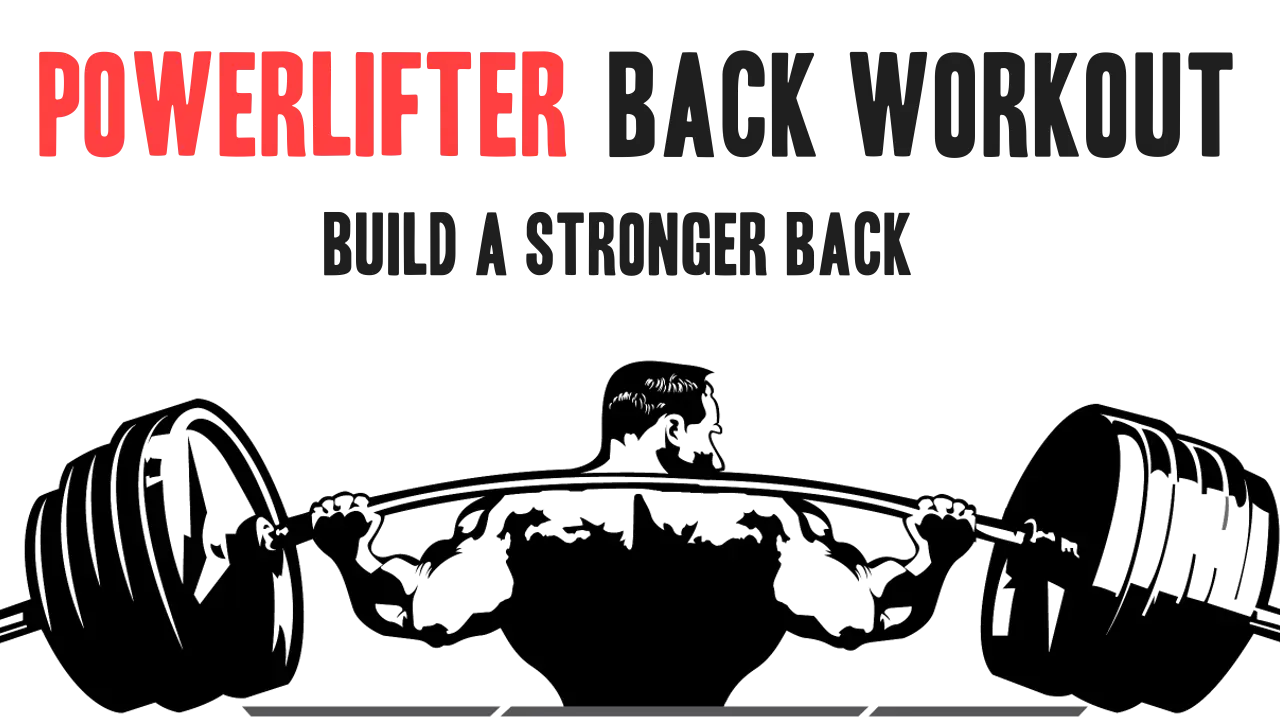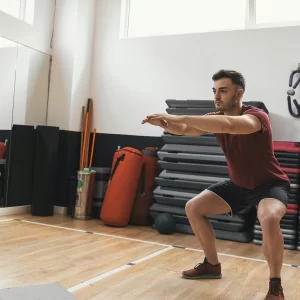Contents
A strong back is essential for any powerlifter looking to make the most out of their workouts. With the right exercises and a dedicated approach, you can build a powerful back that will set you apart from the competition. This guide outlines a strategic back workout tailored for powerlifters, along with considerations for exercise selection and customization based on individual goals.
What is Powerlifter Back Workout?
Powerlifter back workout is a powerful fitness regimen designed specifically to target the large muscles of the back. It focuses on strengthening and toning the lats, traps, rhomboids, erector spinae, and even smaller muscle groups like your rotator cuff. This type of workout requires consistency in order to be effective and see results; it is not something that can be done sporadically or just once a month for maximum benefit.
The exercises used in powerlifter back workouts should include compound movements such as pull-ups, rows, deadlifts, face pulls, and lat pulldowns. These exercises work for multiple muscle groups at once to help build overall strength and size while also improving posture. Powerlifter back workouts are great for anyone looking to get stronger or build muscle mass as they focus on lifting heavier weights than traditional bodybuilding routines.
Muscles Targeted
Powerlifting is a sport that not only works the core muscles but also focuses on the back muscles. Performing any powerlifter back workout will provide both strength and stability to athletes. A well-rounded workout routine should target the major muscles of this area, including the latissimus dorsi, trapezius, rhomboids, and erector spinae.
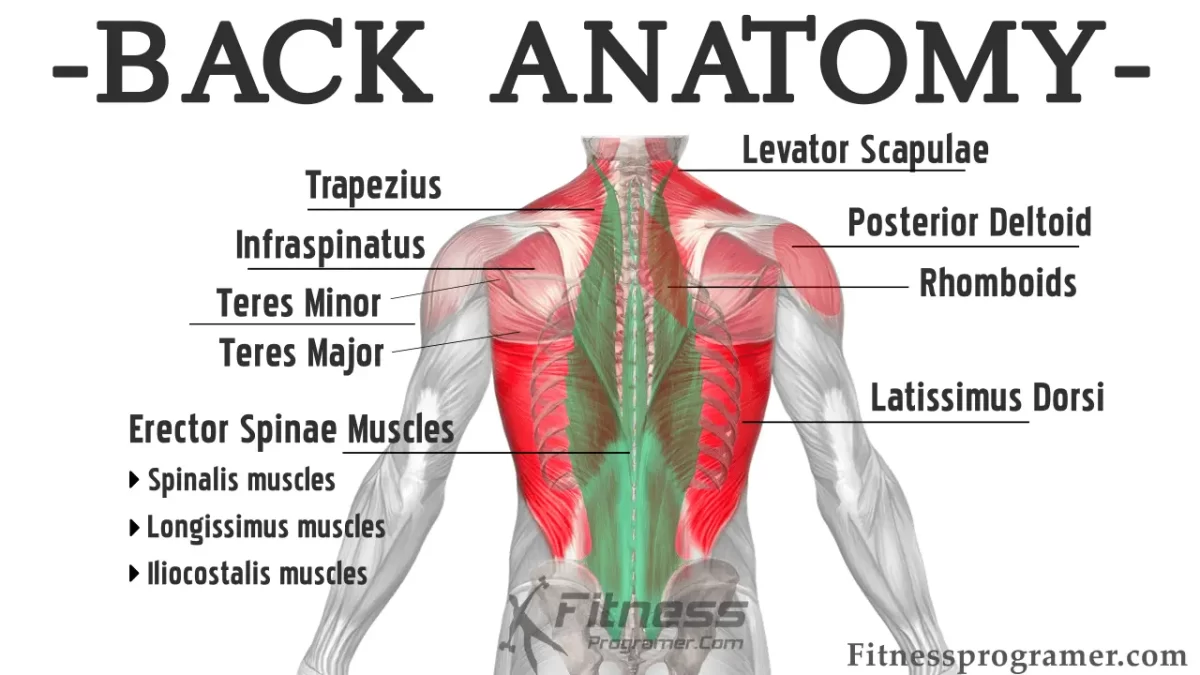
Powerlifter Back Workout
Exercise 1: Barbell Deadlifts
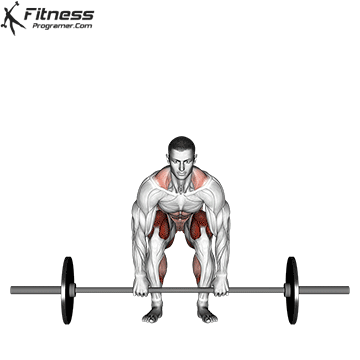
Barbell deadlifts are an essential exercise for powerlifters looking to build their back strength and power. This particular workout requires tremendous focus and control, as the lifter will be lifting the bar from a standing position, then lowering it back down to the ground. The powerlifter must use proper form and technique in order to activate all of the necessary muscles for a full range of motion exercises.
When performing barbell deadlifts, not only will it improve overall muscular strength, but also provide stability training which is beneficial for posture and balance. This type of workout can also enhance coordination by requiring the lifter to work for all muscle groups simultaneously. In addition to improving physical fitness, barbell deadlifts have psychological benefits such as improved confidence and mental toughness.
Exercise 2: Wide Grip Pulldowns

Wide grip pulldowns are an important part of a powerlifter’s back workout. They work muscles in the lats, rhomboids, trapezius, and teres major and minor. This exercise is effective for building strength and size in the upper body. It can be performed using either a barbell or a cable machine.
When performing wide-grip pulldowns, it is important to ensure that proper form is maintained throughout the exercise. Begin by sitting down on a bench with your feet flat on the floor and your chest upright. Grasp the bar with an overhand grip slightly wider than shoulder-width apart and lift it off of the stack until your arms are fully extended above you. While maintaining a slight bend at the elbow, slowly lower the bar towards your chest while keeping your torso stationary throughout this motion.
Exercise 3: Bent Over Rows

Bent over rows are an essential movement for powerlifters. It is one of the most effective exercises for strengthening the back since it not only works the muscles in the back but also allows you to develop coordination and stability in your hips and core. Additionally, bent-over rows can help you build strength and power that will benefit your performance in other lifts such as squats and deadlifts.
When performing bent-over rows, it’s important to keep your chest up as much as possible while pushing your hips back behind you. This will ensure that you are engaging all of the necessary muscles, including those in your lower lats and mid-back area. It’s best to start with light weights so that you can focus on proper form before progressing to heavier loads.
Exercise 4: Seated Cable Rows
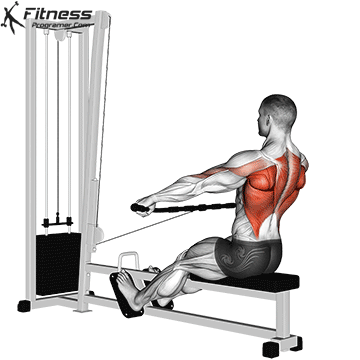
Seated cable rows are one of the most powerful back workouts available for powerlifters. As a form of resistance training, this exercise strengthens the muscles of the back and arms while also increasing core stability. It is an essential part of any serious powerlifter workout routine.
The seated cable row works by having an individual sitting at a cable station while holding onto two handles attached to weights. The person then proceeds to pull the handles towards their body in a rowing motion, focusing on engaging their muscles along with maintaining proper form and posture as they do so. By doing this movement consistently over time, it strengthens both the upper and lower back muscles resulting in increased strength and performance in powerlifting competitions.
Exercise 5: Single-Arm Dumbbell Rows
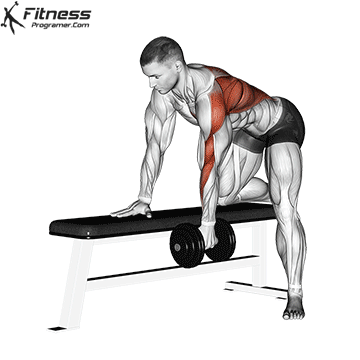
Single-arm rows are a powerlifter’s go-to back workout. They provide an intense and effective way to build strength and size in the back muscles, while also helping to improve posture and body alignment. The exercise is done by standing with one foot forward, grabbing a weight with one hand, pulling it towards your body while keeping your elbow close to your torso, then pushing off with your leg as you bring the weight back up. This type of movement targets the entire back area; however, its main emphasis is on the latissimus dorsi or “lats”.
Not only do single-arm rows develop strength but they also help increase muscular endurance. As you pull on the weight each time, you must stabilize yourself which helps build balance and stability throughout your core region.
Reps and Sets
Powerlifting is a beloved strength sport for its intense physical and mental challenges. Those who take up powerlifting often have to manage complex workout routines that feature different reps and sets. The 3-4 sets of 4-6 reps scheme represents a highly effective method to achieve this goal. It falls into the realm of strength training which emphasizes using heavier weights for fewer repetitions. This type of training helps build overall muscular strength and power, which is crucial for powerlifting success.
Sample reps and sets:
- Deadlift: 3 sets of 5 reps with 80-90% of 1 RM
- Pulldowns: 4 sets of 6 reps with 70-80% of 1 RM
- Bent Over: 3 sets of 5 reps with 80-90% of 1 RM
- Cable Rows: 4 sets of 6 reps with 70-80% of 1 RM
- Dumbbell Rows: 4 sets of 6 reps with 70-80% of 1 RM
Here are some additional points to consider:
- Warm-up: Make sure you perform a proper warm-up before starting this workout to prepare your muscles for heavy lifting.
- Rest Periods: Allow for 3-5 minutes of rest between sets, especially for the deadlift and bent-over rows.
- Progression: As you get stronger, gradually increase the weight you lift over time.
Recovery and Nutrition Tips
Recovery and nutrition are essential components of a powerlifter’s back workout. Here are some tips to help you recover effectively and fuel your body for optimal performance after intense back workouts.
Pre-Workout: Consume a balanced meal containing carbohydrates, protein, and a small amount of healthy fats 1-3 hours before your workout to provide sustained energy and prevent fatigue. Consume sufficient protein throughout the day (1.4-2 grams per kilogram of body weight) to support muscle growth and repair.
Post-Workout: Refuel your body with a combination of protein and carbohydrates within 30 minutes to an hour after your workout to support muscle recovery and glycogen replenishment. This could be a protein shake, a balanced meal, or a snack containing both protein and carbs.
Stay Hydrated: Proper hydration is essential for optimal performance and overall health. Drink plenty of water throughout the day, especially before, during, and after exercise to replace fluids lost through sweat. Consider adding electrolytes to your water during intense workouts to maintain electrolyte balance.
Recovery: Adequate rest between workouts is also necessary for optimal results; allowing at least 48 hours between consecutive back sessions will result in better recovery time as well as more muscle stimulation.
Get Adequate Sleep: Quality sleep is essential for muscle recovery and growth. Aim for 7-9 hours of uninterrupted sleep each night to allow your body to repair and regenerate. Create a sleep-friendly environment by minimizing screen time before bed, keeping your room cool and dark, and establishing a consistent bedtime routine.
To help with recovery after a powerlifting session, it is important to focus on cooling down properly. This could include stretching, foam rolling, or light cardio exercises such as walking or easy jogging.
Conclusion:
In conclusion, a powerlifter back workout is an important part of achieving maximum performance in the sport. With dedication and hard work, you can use this type of workout to build strength and power, as well as increase your overall muscle mass.
The key to this type of workout is consistency – if you’re not consistently training and pushing yourself, then you won’t see the results that you’re looking for. It’s also important to make sure that your technique is correct throughout all exercises so that you don’t injure yourself in the process. Lastly, it is vital to supplement your powerlifting back workouts with proper nutrition and rest in order to maximize your performance!

